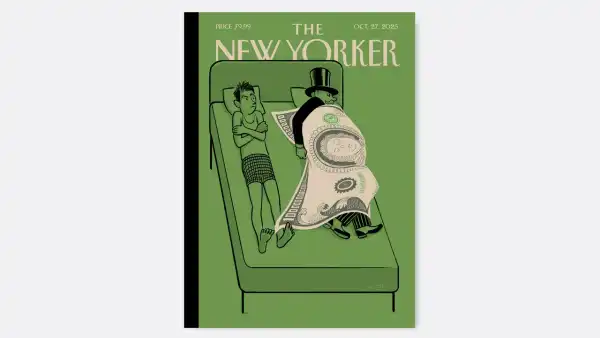
Like its predecessor “Dirty John,” a pioneer of the noir-journalism podcast, the Wondery crime series “Dr. Death,” which concluded recently, centers on a charming villain in medical scrubs. “Dirty John” gave us the story of John Meehan, a violent con man who preyed on women by posing as an eligible doctor looking for love. “Dr. Death” is about Christopher Duntsch, an accredited but incompetent Dallas neurosurgeon, whose wrongdoing was close to butchery. Between 2010, when he began his surgery practice, and 2013, Duntsch, then in his early forties, performed many operations that resulted in severe injury or death. Why he did this, and how he was allowed to keep doing it, is the series’ central mystery. But it doesn’t always feel like the show’s central concern. Like “Dirty John,” “Dr. Death” wavers, at times uncomfortably, between entertainment, journalism, and commerce. Both series feature logo art that evokes horror movies or mass-market thrillers, advertising that approaches tastelessness, and narratives that occasionally verge on melodrama. They also both reached No. 1 on iTunes. Like their subjects, they can feel like slick movers dressed in respectable clothes.
Duntsch’s story is stunning, and is reported ably for “Dr. Death” by its host, Laura Beil, a veteran medical journalist. Her writing generally avoids the overheated tone of “Dirty John,” whose host and writer, Christopher Goffard, told me that old-time radio dramas had influenced his show’s style. But “Dr. Death” at times substitutes evocative scene-setting for expositional clarity, plunging us into a vivid horror whose basic parameters we don’t understand. As the podcast begins, it uses a second-person point of view: you are an innocent, and, by the end, you will be the victim of a monster. “Imagine that you’re struggling with back pain for months, maybe years,” Beil says. “Then, you find a doctor.” We hear a clip of a woman talking about how great Duntsch is—what sounds like a testimonial for a commercial. Beil continues, “We’re at our most vulnerable when we go to our doctors. We place our trust in the person at the other end of that scalpel.” We hear about Web sites that recommend Duntsch, and then Beil resumes: you get the surgery and wake up “in awful pain. . . . You don’t know this yet, but you will never walk again. And you are one of the lucky ones.”
At this point, we don’t know where we are, where the testimonials are from, or who Duntsch is. It’s a compelling but opaque way to begin—this is a story about trust that hasn’t established why we should trust it. After a bluesy theme song, Beil introduces herself, and we hear an interview with Dr. Robert Henderson, a respected veteran surgeon who works at the Dallas Medical Center. In July of 2012, Henderson got a call from the hospital’s administrator, asking if he could correct a surgery that had gone badly. He agreed, and soon saw that Duntsch had committed a “travesty.” We hear details, and it’s the stuff of nightmares. A nurse who’d assisted in the surgery said that Duntsch appeared to be “on something,” and that he’d been wearing the same scrubs, with a hole in the pants, and no underwear, for three days. As the episode unfolds, we learn about another botched surgery that Duntsch had performed the previous day, whose victim was dying, and of a third he did that week. The surgical narratives are fascinating, grisly. We hear exacting descriptions about how much blood should be seeping into a sponge and how much is—way, way too much—and about an amputated nerve root, and a screw being inserted into muscle tissue, not bone. And it’s all baffling. Who is this guy? How long has he been practicing? Has he done this before? Why?
The confusion reaches new heights around thirteen minutes into the first episode, when a man’s voice interrupts. “Let’s check in,” he says. “How are you doing so far?” He then assures us that this series, though tough to listen to, is one of the most important stories we’ll ever hear, and, further, that it is important to find comfort anywhere you can in life—for example, in a pair of Bombas socks. (The ads vary, depending in part on what app you use.) In an ad for our ubiquitous friend ZipRecruiter, he warns us against ending up with a “hasty new hire” who “shows up to work dishevelled and distracted”—qualities that we’ve just heard about Duntsch. Several other ads also slyly connect products to the show’s themes, and their chipper promo codes, sometimes repeated thrice, are “DEATH.” “Dirty John” employed similar tactics—scenes from a true story about violence against women would segue into peppy ads for something called Hunt a Killer, a serial-killer game delivered to your door—but “Dr. Death” goes even further. (“How much do we really know about the people we meet?” another ad says.) The show sent out promotional “Dr. Death” blindfolds. And Wondery advertised the series, with its signature blood-spattered logo, on a billboard across the street from the Baylor medical center in the Dallas suburb of Plano, effectively taunting not just Duntsch’s former workplace but, one presumes, its current patients. Hours after the billboard appeared, it was covered up.
Crass commerce aside, “Dr. Death” does several important things well. Beil elicits fascinating testimony from Duntsch’s former roommate and teammates about his personality, his blind spots, and his lack of self-awareness. He was a stubborn football player who wouldn’t give up on practicing drills, even if he didn’t seem to understand them, a former teammate says. He’d frequently leave his keys in the door, never learning to check the lock. Friends joked that they wouldn’t get surgery from him; one said, “You’ll end up sewing something up inside my head!” Later, Duntsch did operate on a close friend, disastrously, which resulted in permanent paralysis. If Baylor-Plano had fired Duntsch outright then, Beil says, it could have protected twenty-nine more patients. (Beil says that Baylor declined to give any substantive comment, but it has denied wrongdoing in other press accounts.)
Duntsch was, the podcast says, a “hundred-year storm” of a medical disaster: inadequately trained, hubristic, and an alleged abuser of cocaine, alcohol, LSD, and prescription painkillers. Texas had a lacking oversight system, and neurosurgeons are lucrative for hospitals, so when Duntsch screwed up he’d change local affiliations and continue operating. The show’s presentation of all this is strong but flawed. The first episode forsakes clarity and context for drama; the second and third don’t do enough to illuminate Duntsch’s experience during medical school and his neurosurgery residency, and why he was so inadequately trained; key elements of the story, such as how Duntsch was allowed to keep practicing, are presented confusingly late. Other elements remain obscure, such as context about a rambling, incriminating letter in which he wrote about becoming a “cold-blooded killer.” Most of these gaps align with Beil’s access—and she tried hard to get access—but they can feel elided in the narrative.
The series’ later episodes do a thorough job of elucidating the flaws in Texas’s medical-oversight system. And we learn that because Baylor-Plano allowed Duntsch to leave voluntarily, in a way that saved itself “a lot of red tape and legal fuss,” it also avoided having to report his wrongdoing, leaving other hospitals without crucial information and the public at risk. Basically, everything that could go wrong in Duntsch’s case did. He was stopped only after the combined involvement of the Dallas County district attorney, a lawyer, a journalist, and the state medical board—heroic efforts initiated by Henderson and Dr. Randall Kirby. Duntsch is now serving a life sentence in prison. (His attorney has filed an appeal; the case is pending.)
On the one hand, Beil and Wondery have done something important: detailed a horrifying story that directly affects public health and safety. Duntsch’s story has been thoroughly covered in print journalism, but podcasts, which deploy heightened narrative intimacy, emotional voices, and entertaining music, have a broader, more urgent appeal. For audiences, lushly produced podcasts about crime benefit, even now, deservedly or not, from the cultural cachet associated with the show that popularized them: “Serial” Season 1. The very best of these podcasts, such as “In the Dark,” through their dignified editorial and aesthetic choices, clearly position themselves as journalism before entertainment. Other crime podcasts, including “Dirty John” and “Dr. Death,” position themselves elsewhere, in a murky region between thriller and public service. Both shows—in their lurid titles, logos, ads, and beyond—stress salesmanship, which makes the public service implicitly hard to trust. But the public does seem thrilled: their success attests to that.
Sourse: newyorker.com






